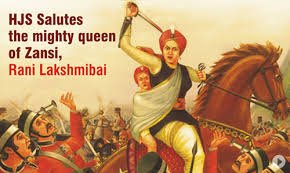District of Chhattisgarh with the Lowest Literacy Rate
Introduction to the Issue Chhattisgarh, a state in central India, has been facing challenges related to literacy rates in its various districts. The state government has recently highlighted that the district of [Name of the District] has the lowest literacy rate in Chhattisgarh. This revelation has sparked discussions on educational development and the need for targeted interventions to address this disparity.
Current Situation in [Name of the District] According to recent data, [Name of the District] in Chhattisgarh has a literacy rate of [X%], which is significantly lower than the state average of [Y%]. The low literacy rate in this district is attributed to several factors, including limited access to quality education, socio-economic challenges, and inadequate infrastructure. Efforts are being made by both the government and various NGOs to improve the educational standards in this region.
Government Initiatives and Measures In response to the concerning literacy statistics, the Chhattisgarh state government has launched several initiatives aimed at improving literacy rates in [Name of the District]. These initiatives include the establishment of new schools, increased funding for educational programs, and community outreach efforts to encourage school enrollment and attendance. Additionally, special programs targeting adult literacy and vocational training are being implemented to address the needs of the adult population.
Challenges and Opportunities Despite these efforts, there are several challenges that need to be addressed to improve literacy rates in [Name of the District]. These challenges include geographic barriers, a lack of trained teachers, and resistance to educational reforms in some communities. However, these challenges also present opportunities for innovative solutions and community-based approaches to enhance educational outcomes.
Future Outlook The future outlook for literacy improvement in [Name of the District] depends on the successful implementation of current initiatives and the development of new strategies to address ongoing challenges. Continued collaboration between the government, educational institutions, and local communities will be crucial in achieving significant progress.

Why This News is Important
Highlighting Educational Disparities The identification of [Name of the District] as the district with the lowest literacy rate in Chhattisgarh is crucial in highlighting educational disparities within the state. This information brings to light the urgent need for focused educational interventions to address these disparities and ensure equitable access to education for all children in the state.
Impact on State Development Low literacy rates can significantly impact the overall development of a state. Education is a key factor in economic development, social stability, and improved quality of life. By addressing the literacy challenges in [Name of the District], the state government aims to enhance human capital and promote sustainable development across Chhattisgarh.
Government Accountability This news also serves as a call to action for the state government and policymakers. It emphasizes the importance of holding accountable those responsible for implementing educational reforms and ensuring that resources are effectively utilized to improve literacy rates.
Community Engagement The report underscores the role of community engagement in addressing educational challenges. It highlights the need for community-based initiatives and partnerships to support educational efforts and encourage active participation in improving literacy rates.
Encouraging Further Research The identification of the district with the lowest literacy rate encourages further research and analysis into the root causes of low literacy rates. It also stimulates discussions on best practices and successful interventions from other regions that could be applied to [Name of the District].
Historical Context
Educational Initiatives in Chhattisgarh Chhattisgarh has made various efforts to improve educational standards since its formation in 2000. The state government has introduced several programs aimed at increasing literacy rates, including the establishment of new schools and the implementation of nationwide educational schemes.
Challenges in Remote Areas Historically, remote and rural areas in Chhattisgarh have faced significant challenges in accessing quality education. Issues such as geographical isolation, lack of infrastructure, and socio-economic barriers have contributed to lower literacy rates in these regions.
Recent Developments In recent years, the state has intensified its efforts to address educational disparities through various initiatives. These include the enhancement of educational infrastructure, recruitment of teachers, and the introduction of community-driven programs to support educational development.
Key Takeaways from “District of Chhattisgarh with the Lowest Literacy Rate”
| Serial Number | Key Takeaway |
|---|---|
| 1 | [Name of the District] has the lowest literacy rate in Chhattisgarh. |
| 2 | The literacy rate in [Name of the District] is significantly below the state average. |
| 3 | The state government has launched several initiatives to improve literacy rates in the district. |
| 4 | Challenges include geographic barriers, lack of trained teachers, and socio-economic issues. |
| 5 | Successful improvement depends on collaborative efforts and innovative solutions. |
Important FAQs for Students from this News
1. What district in Chhattisgarh has the lowest literacy rate?
- [Name of the District] is the district with the lowest literacy rate in Chhattisgarh, according to recent data.
2. What is the current literacy rate in [Name of the District]?
- The literacy rate in [Name of the District] is [X%], which is lower than the state average of [Y%].
3. What initiatives has the Chhattisgarh government launched to address low literacy rates?
- The state government has introduced several measures, including the establishment of new schools, increased funding for educational programs, and community outreach efforts to improve literacy rates in the district.
4. What are the main challenges contributing to the low literacy rate in [Name of the District]?
- Key challenges include geographic barriers, limited access to quality education, socio-economic issues, and inadequate infrastructure.
5. How can local communities contribute to improving literacy rates in the district?
- Local communities can support educational efforts by participating in school programs, encouraging school enrollment, and collaborating with government and non-governmental organizations to address educational challenges.
Some Important Current Affairs Links

















